The Red River Giant Softshell Turtle
The Yangtze Giant Softshell Turibule (_Rafetus swinhoei_ ), also known as the Red River giant softshell turtle, is the world’s rarest turtle. It is believed that there are only three known specimens of this rare animal that remain in the world – two of them at the Suzhou Zoo in China and one in Dong Mo Lake Son Tay in Hanoi, Vietnam. However, researchers have identified the DNA of this enormous turtle in a lake in Vietnam, pointing out that there is at least one other specimen!
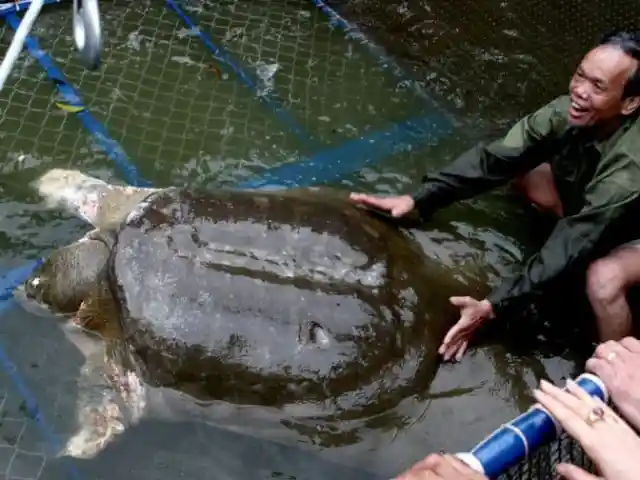
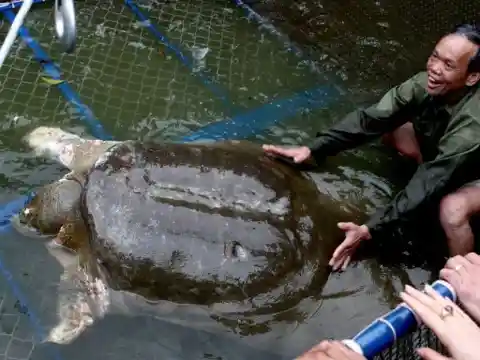
This unique turtle feeds on aquatic invertebrates, such as crabs and snails. But these are not its only source of protein. This enormous turtle also feeds on fish, frogs, and vegetation. What’s more, it lays between 20 and 80 eggs, measures up to forty inches in length, and weighs easily over 200 pounds. So, if you are in China or Vietnam, don’t hesitate and contact an animal welfare organization if you happen to spot one!
The Roloway Monkey
Roloway monkeys are spotted living in groups in Western Africa. They are considered one of the most endangered monkey species on the planet. In fact, they were considered one of the top 25 most endangered primate species of 2017\. The population of Roloway monkeys is declining because of habitat degradation caused by deforestation, agriculture, charcoal production, and illegal poaching.
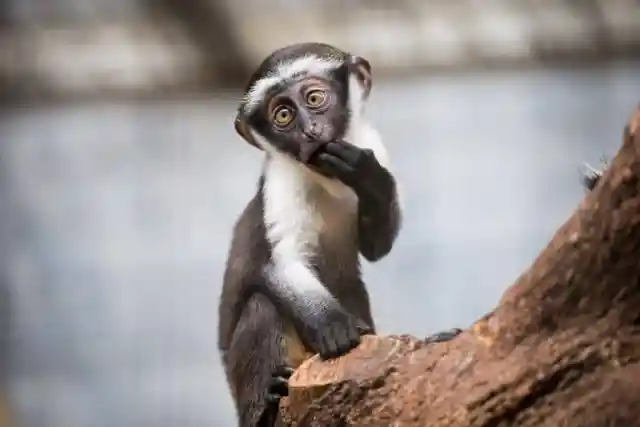
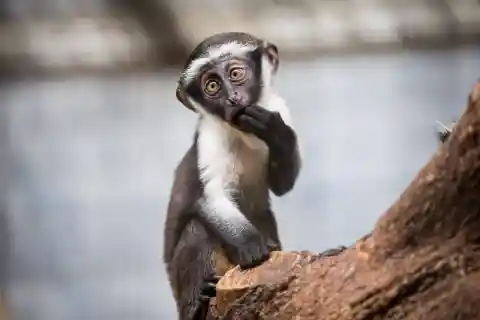
Roloway monkeys feed primarily on insects, but they also get the nutrients they need from seeds and pulp of mature fruits and leaves. They have a dark gray body and exhibit beige to light orange fur on their chest, arms, ears and chin. Roloway monkeys also have a beige patch across their forehead. Their tails are longer than their body (27 inches for females and 45 inches for males).
The Pygmy Three-toed Sloth
Pygmy three-toed sloths (_Bradypus pygmaeus_) live on the tiny island Escudo de Veraguas, which is off the Caribbean coast of Panama. This animal is considered to be critically endangered. In fact, figures showed that, by 2012, there were only 79 of them left on Earth. The number of Pygmy three-toed sloths has declined mainly due to the destruction of their habitat and hunting.
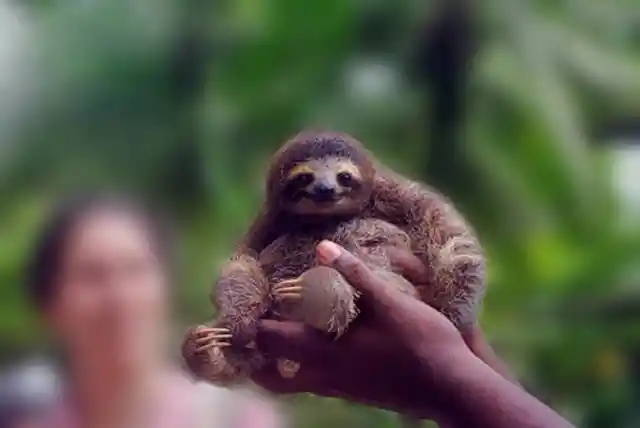

The pygmy three-toed sloth primarily feeds on the leaves of red mangrove trees. They weigh less than 8 lbs and are noticeably smaller than other kinds of sloths. These unique sloths measure 19 to 21 inches and have long tails. Quite a unique specimen! So, pay attention if you are near Panama because nowadays there may be only 48 sloths left. Let’s hope that this number doesn’t continue falling.
The Saola
The Saola, often called the Asian unicorn and discovered in 1992, is another critically endangered species. It has been spotted in certain areas of Vietnam and Lao. The main threats to the Saola are hunting, commercial poaching, habitat loss, and insufficient conservation attention. Researchers estimate that the total Saola population is less than 750.
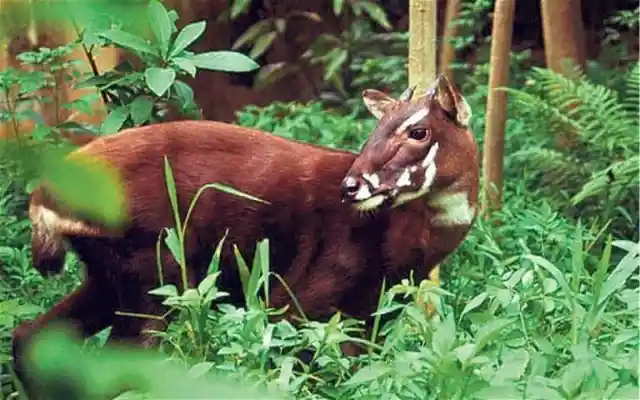
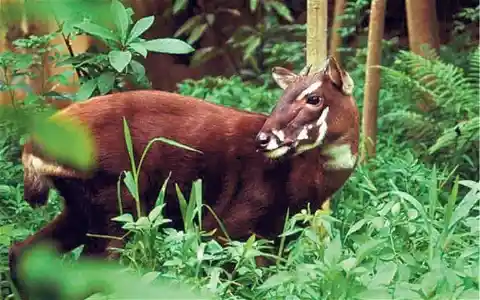
If you have the chance to see one, you will no doubt that you are a lucky person. The Saona’s unusually long curving horns, which can reach 20 inches in length, and distinctive white markings on its face and head, make this animal be considered one of the rarest specimens of the world. Two facts: Adults weigh 176-220 lbs and measure 33 inches.
The Araripe Manakin
We've mentioned mammals and reptiles…Now it’s the turn of the birds! The Araripe Manakin is known only from a very small area of forest in Ceará, Brazil. It is estimated that there are 800 individuals. This species is seriously threatened by deforestation. Many trees have been cut down in order to construct holiday homes and recreational facilities, disrupting the Araripe Manakin’s habitat.


These birds feed on small fruits and nests over streams. As to their appearance, the most characteristic feature they have is the unique brilliant crest that looks like a crown that is on their heads. Luckily, many actions have been taken so as to protect this rare bird. For instance, an awareness campaign has been launched and some activists are trying to create a protected area.
The Angel Shark
This unique shark can be found in the Canary Islands, Eastern Atlantic, and the Mediterranean Sea. Unfortunately, it’s listed as Critically Endangered on the IUCN Red List of Threatened Species. It’s believed that the number of angel sharks has decreased due to overfishing and high bycatch. What makes this fish so special?

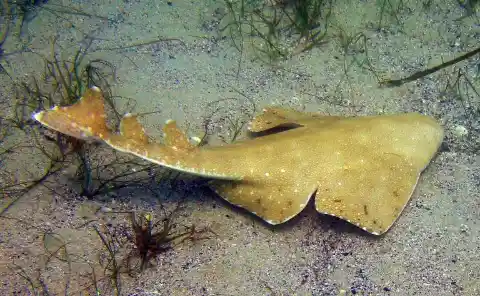
Angel sharks are flat sharks that can grow up to 2.4m in length. They have large fins, and they can camouflage themselves. They are meat-eaters, and females can deliver from 8 to 13 babies. Human-related attacks are very rare. However, if you come across one, you should be careful and contact a conservation organization so as to help to protect one of the rarest and most beautiful fish in the world!
The Elephant Shrew
Elephant shrews, also called sengis, are widely distributed throughout Africa, excluding western Africa and the Sahara region. They are found living in dry forests and thickets. They are so-called because they have quite rather long and flexible noses which look like an elephant’s trunk. What’s more, despite their name, they are not related to shrews at all.
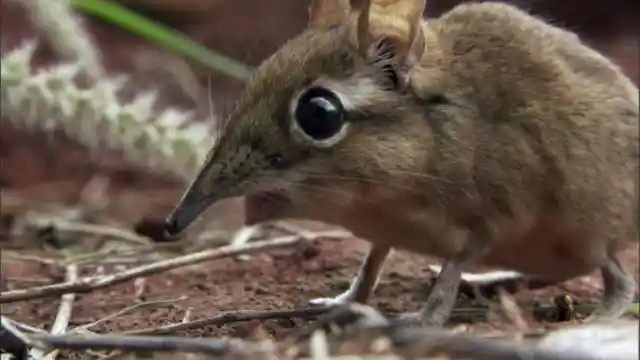
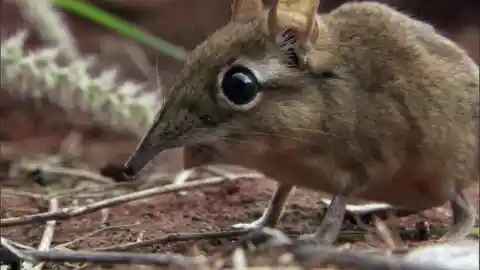
This unique animal feeds on invertebrates (especially ants and termites), fruits, seeds and leaves. They weigh 25 to 700 grams depending on the species, and they can grow up to 22 to 30 centimeters in length, not including their tail. So, if you happen to see one of these fast animals, don’t be scared and think that you are in front of one of the rarest animals in the world.
The Rio Pescado Stubfoot Toad
The Rio Pescado Stubfoot Toad, often referred to as harlequin toad, was thought to be extinct until one was found by Eduardo Toral-Contreras and Elicio Tapia in Ecuador in 2011\. This species can be found living on riverbanks and lowland rainforests in southwestern Ecuador. Nowadays, the population size is unknown.

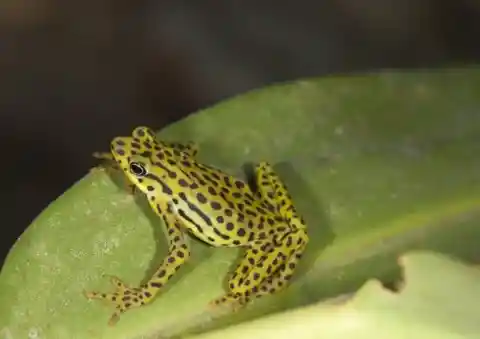
The number of these amphibians has declined dramatically in recent years. The main cause of the decline was the chytrid fungal disease. Habitat degradation and loss, as a result of agriculture and logging, and pollution also represent a threat to the Rio Pescado Stubfoot Toad.
The Greater Bamboo Lemur
The Greater Bamboo Lemur is found living in groups in the forests of southeastern Madagascar where giant bamboo trees are abundant. As its name points out, this animal exclusively feeds on bamboo, including the shoots, pith, and leaves. Their habitat is threatened by slash-and-burn agriculture, mining, illegal logging, and hunting. It is estimated that there are around 500 Greater Bamboo Lemurs alive today.

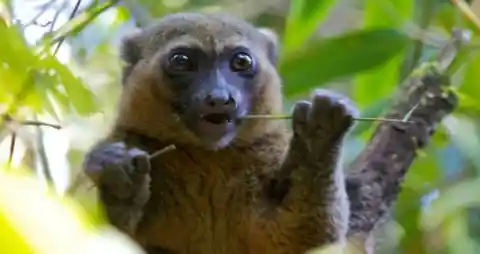
An eye-catching feature of this species is the presence of white tufts by its ears. Just look at them! They are lovely, aren’t they? The Greater Bamboo Lemur weighs only 2.5 kilograms and measures between 25 and 46 centimeters overall. It has a reddish gray-brown long tail. What about their behavior? Greater bamboo lemurs are shy and prefer the cover of darkness, emerging during the night to feed themselves.
The Northern Bald Ibis
The red-faced Northern Bald Ibis is another critically endangered species. Hunting, overgrazing, firewood collection, disturbance, the use of pesticides, and unidentified natural events like climate cooling have been the cause of the decline of these rare birds. Nowadays, there exist two populations, one in Morocco and one in Syria. They live up to 25 years.
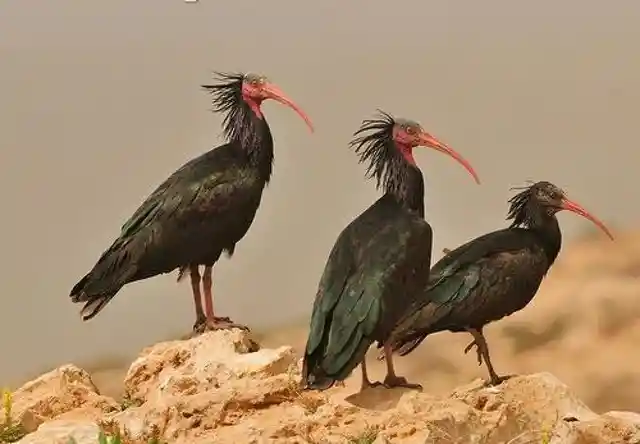
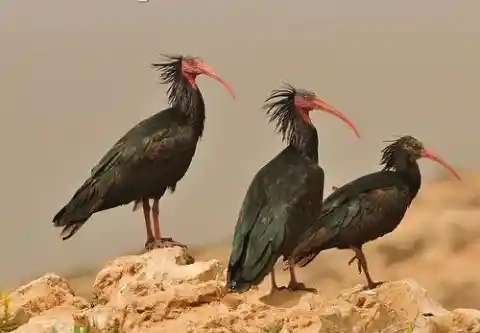
Northern bald ibis feed on grasshoppers, locusts, mole-crickets, crickets, beetles, small reptiles, scorpions, snails, worms, frogs, and fish. Occasionally, they eat small mammals, nestling birds, and vegetation including berries, young shoots, and aquatic plants. They usually feed themselves during the day. They roost and nest in cliffs, close to watercourses.
The Sir David Echidna
The Sir David’s Long-Beaked Echidnas, also known as Attenborough’s long-beaked echidnas, are the smallest echidna species. They were named after English naturalist David Attenborough. They are considered to be critically endangered, so conservation efforts are being made so as to protect this species. They live in mountain forests. Interestingly, echidnas and platypus are the only mammals that lay eggs.
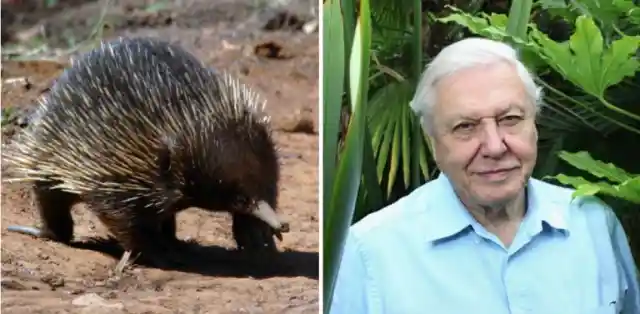
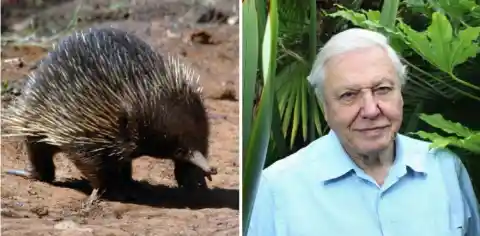
Sir David’s Long-Beaked Echidnas have long dark brown or black fur and spines on their sides and back. They have a long snout as well. Their eyes and mouth are tiny. They have strong feet that they use for digging. Whenever they are threatened, these rare animals roll up into a spiny ball so as to protect themselves from any possible harm.
The Colombian Red-Crested Tree Rat
The Colombian Red-Crested Tree Rat, a rodent about the size of a guinea pig with a long, fuzzy black and white tail, has only been found in Sierra Nevada, Colombia. Although they may be hunted by cats like subway rats, deforestation and climate change are two of their main threats. This species is listed as critically endangered by the IUCN as well.


This little creature was spotted by two volunteers at Fundacións ProAves’ El Dorado Nature Reserve in Colombia in 2011 while they were camping in the field. It was an amazing discovery, given that no one has seen another one since 1898\. Luckily, the Colombian Red-Crested Tree Rat let the volunteers take a photo of it before heading back to the dark forest.
The Hirola
The Hirola is a type of antelope that can be found near Kenya and Somalia. Sadly, they are threatened by drought, poaching, and habitat loss and it is estimated that there are around 600 specimens alive. So the Hirola is not only the world’s rarest antelope but also the most endangered one. The horns and its brown color make it so beautiful. What else do we know about this animal?
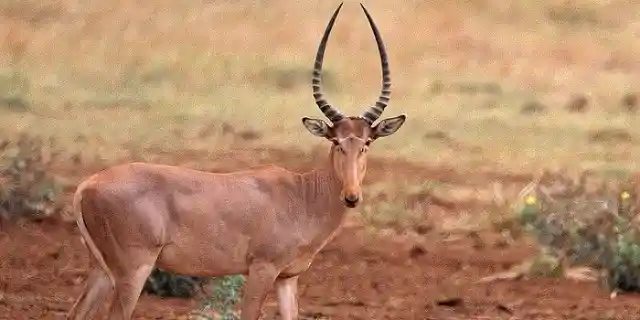
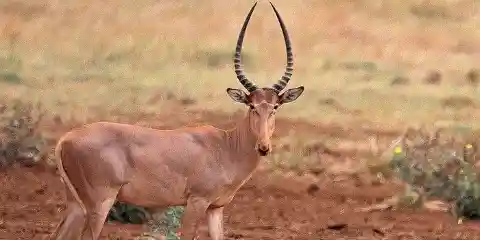
The restoration of the Arawale National Reserve, which is at the center of the Hirola’s geographic range, manual tree removal, and other conservation projects have helped to protect the Hirola. The Hirola feeds on grasses and forbs. At the time of eating, they are so selective that they only feed on short, newly sprouted grass. So, it’s also important to be careful if you happen to be walking on the grass!
The Funnel-Eared Bat
The Cuban Greater Funnel-Eared Bat is found living in caves in Isla de la Juventud in Cuba. Caves are an extremely important habitat as they provide the humid and hot conditions (near 100% humidity and temperatures sitting around 40-degrees Celsius) that some bats require.

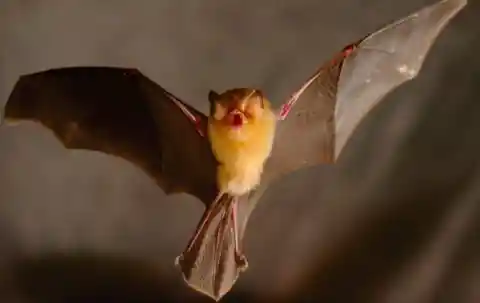
The Cuban Greater Funnel-Eared Bat feeds primarily on soft-bodied insects, like moths, beetles, and crickets. They also eat any small insects which scale the cave walls. Their ears look like funnels as their name suggests. They are their most prominent feature. The Cuban greater funnel-eared bat can reach between 3.5 to 5.5 centimeters in length.
The Durrell's Vontsira
The Durrell’s Vontsira is known only from Madagascar. In fact, this animal has only been found in Lac Alaotra’s region. Nowadays, the Lac Alaotra marshes are extremely threatened by habitat destruction, agricultural expansion, burning, and invasive plants, fish, and other species like the black rat and the Indian civet. The Durrell’s Vontsira should consider going to a different place to live.
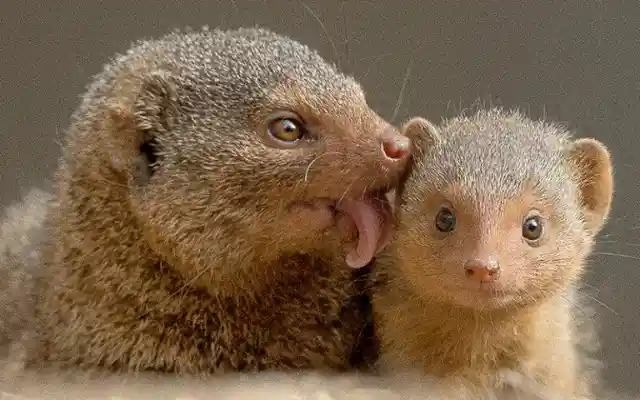

The Durrell’s Vontsira was given that name so as to honor the world-renowned conservationist, Gerald Durrell. This brown carnivorous mammal, which weighs just over 0.5 kilograms, is one of the most threatened in the world. So, let’s take care of this animal’s marsh habitat which is under pressure from invasive species and pollution, and try to recover it!
The Rhino
The Sumatran and the Javan rhinos are the most endangered of all rhinoceros species. Indeed, there are less than 100 left of each species. These rhinos can be found living in Indonesia in a variety of tropical landscapes, both lowland, and highland. Sumatran rhinos have two horns while Javan rhinos possess a single horn.
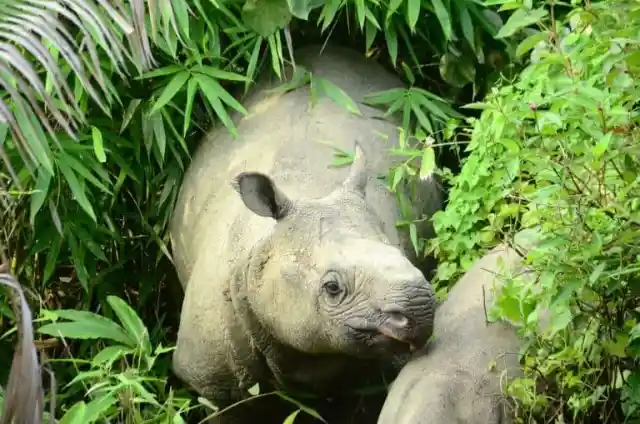
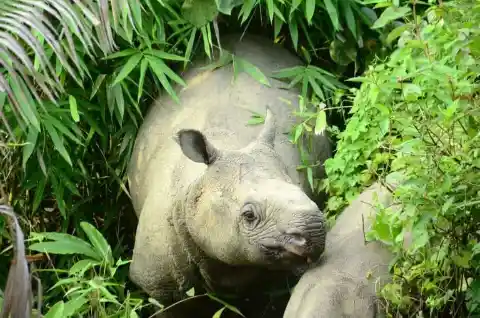
Adult males grow to between 2-4m in length and reach up to 1-1.5m in height. They can weigh as much as 950kg. Javan and Sumatran rhinos live between 30 and 40 years, and female rhinos give birth to one calf at a time, every 3-4 years. These enormous rhinos feed on fruit, such as wild mangoes and figs, leaves, twigs, and bark. Sometimes they eat crops.
The Hainan Gibbon
Look at this lovely family of Hainan Gibbons! The Hainan Gibbon, also known as the Hainan black-crested gibbon, is the world’s rarest ape and one of the world’s rarest mammals, with approximately 22 individuals counted in a recent survey. It is found only on one tropical island in China. Human activity, such as destruction of habitat and hunting, is the main threat to this ape.

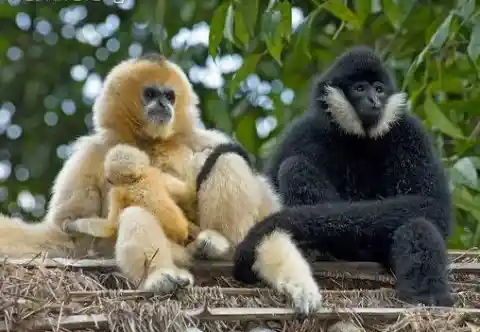
Hainan gibbons weigh between 12.78 and 22.03 lb. The Hainan gibbons haven’t got a tail. However, this is not a problem for this type of ape since they have long arms and legs. These animals feed on fruits, leaves, seeds, flowers, and some insects. Researchers have claimed that not all sexually mature females engage in copulation, so let’s stop hunting, or these animals will disappear!
The Madagascar Tortoise
The critically endangered Ploughshare Tortoise can be found living in Madagascar. As a result of illegal poaching (tortoises are hunt and then sold as pets), it is considered the most threatened tortoise on the planet. It is estimated that there are 600 tortoises left in the wild. The Ploughshare Tortoise, also called the angonoka tortoise, is one of the rarest land tortoises on the planet.
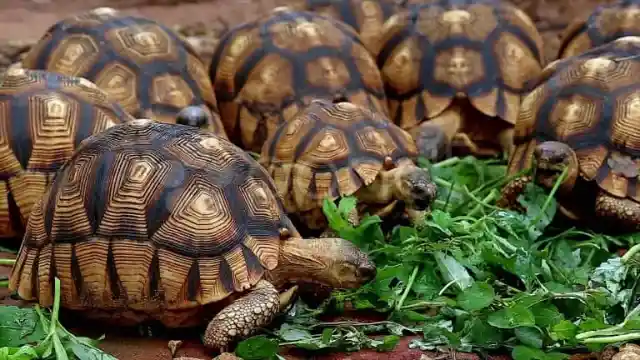
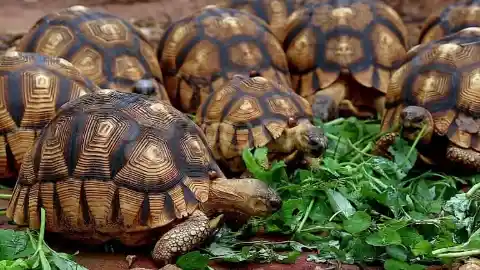
These tortoises, whose sex can often be distinguished visually by size, feed on all kinds of plants. Unscrupulous collectors pay tens of thousands for adult tortoises. So whenever you see one of these tortoises with a high-domed golden shell at a shop or at a friend’s house, take it and make sure that it is placed in an accredited captive breeding program.
The Hairy-Nosed Wombat
The Hairy-Nosed Wombat is found in Australia. In fact, nowadays, there is just one population left situated in 500 hectares of Epping Forest National Park in central Queensland. What bothers this Hairy-Nosed Wombat is not its long nose hairs (unlike most humans) but climate change. The current number of Hairy-Nosed Wombats alive is 115.
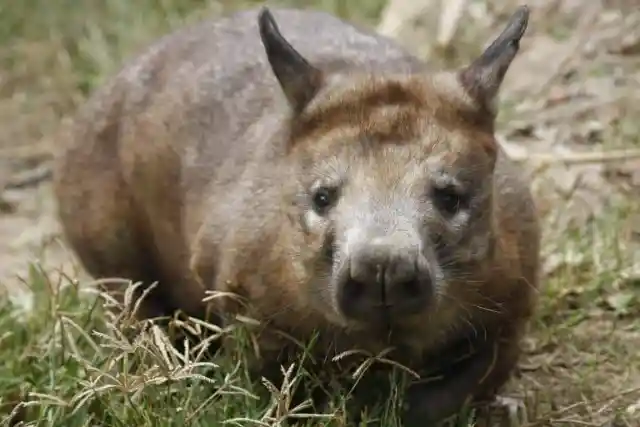
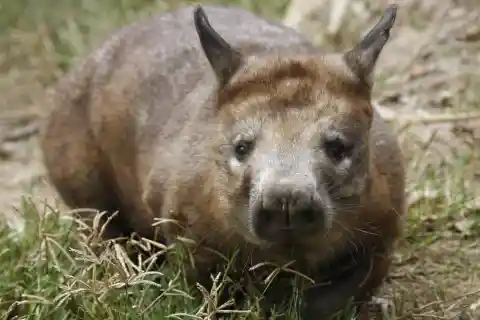
Luckily, reintroduction and recovery plans allow the Hairy-nosed wombat, also known as the Northern hairy-nosed wombat or the Queensland hairy-nosed wombat, to be saved from near extinction. These intelligent animals live on deep sandy soil where they can burrow. They build large complex tunnel systems to avoid the hot, dry climate. If you want to come across one, you will have to go out at night since they are nocturnal specimens.
The Common Sawfish
The Common Sawfish are easily distinguished by their long rostra,, which makes them one of the world's rarest fish. Although they have a body similar to a shark’s, they are rays. Sawfish can be found in rivers but also in freshwater. Sometimes, they may be spotted in bays and coasts. They are classified as critically endangered, and unfortunately, their main threat is not only the shark.
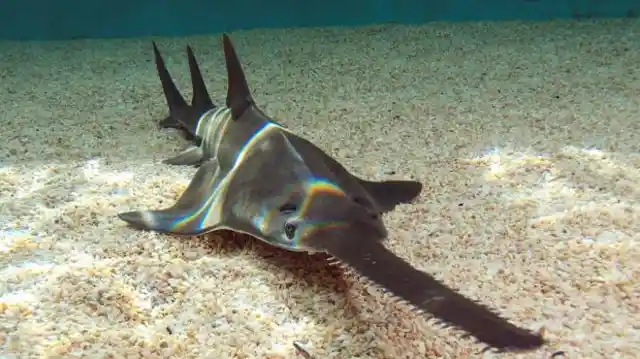
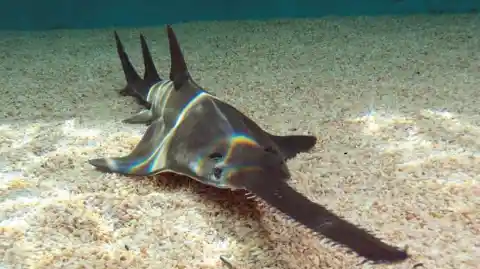
Illegal fishing and habitat loss, and degradation are the main threats to this animal. Their long rostra, also known as snout or rostrum, is easily entangled in nets, making them be easily captured. Why would someone capture one of these? Definitely not to keep it in a fish tank. Sawfish products, particularly their fins (used for food) and their rostrum (sold as an unusual object), are highly valued.
The Vaquita
The Vaquita (“little cow” in Spanish) is a small porpoise found in the Gulf of California, Mexico. It’s one of the rarest and most endangered marine mammal species in the world. Since its population has been dropping during the last years, the Mexican government has taken a number of measures to protect them. For example, a ban on gillnets throughout the range of the vaquita has been imposed.


Despite the efforts, the population of Vaquitas has dropped from 600 in 1997 to 12 in 2008\. However, some hope remains, and a group of scientists has taken cell samples from two vaquitas that were frozen for use in any future research. The aim of the scientists is to use the cells to sequence the vaquita genome and avoid their mass extinction.
The Kaiser's Spotted Newt
The Kaiser’s Spotted Newt, Luristan Newt, or Emperor Spotted Newt may be found in areas up to about 4,921 feet above sea level in the Zagros Mountains of Iran. The combination of colors (yellow, orange, red, white, and black) that it has makes it one of the rarest animals in the world. That combination also makes it attractive to black-market traders.
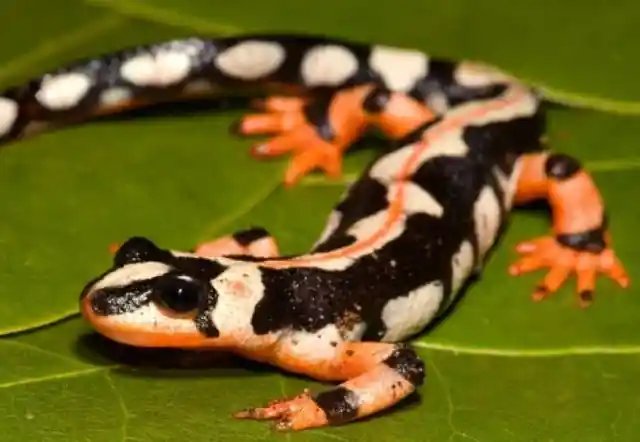

During the breeding season, the female and male specimens can be differentiated by their cloaca’s anatomy. Outside of the breeding season, it may be impossible to distinguish between the sexes. They move like lizards. During the hot, dry season, these tiny animals sleep. Climate change is another threat to this animal who is finding it hard to survive in its habitat.
The Northern Muriqui
The Northern Muriqui (Brachyteles hypoxanthus) can be found living in the Atlantic forest along the east coast of Brazil in South America. They can be bigger than humans. These large primates have long extremities, a long prehensile tail, and a large round belly. The long prehensile tail of the northern muriquis is important because they use it to travel and feed.

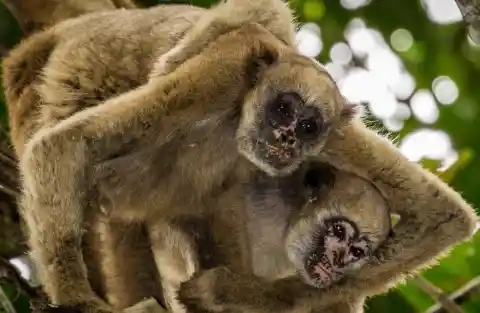
Northern muriquis are social primates that live in groups of both males and females. Just like us, right? Northern muriquis are diurnal primates that eat a variety of plant foods. Since these primates are one of the world’s top 25 most endangered primates, research and conservation programs have been implemented during the last years.
The Franklin's Bumblebee
Isn’t it as lovely as _Barry B. Benson?_ Franklin’s Bumblebees are known only from southern Oregon and northern California. This small yellow insect is endangered due to habitat alteration, pesticide applications, climate change, invasive species, among others. So let’s take action and protect these bees since they act as pollination agents, a function that is really important for the ecosystem.
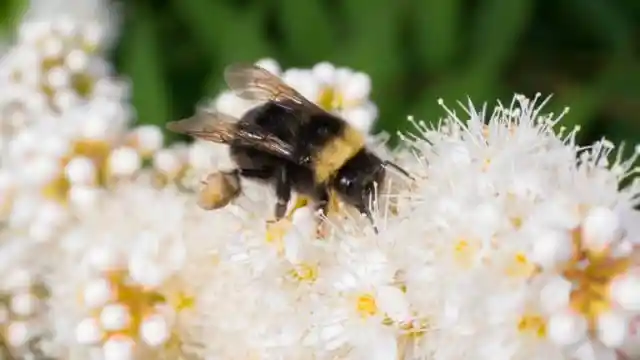
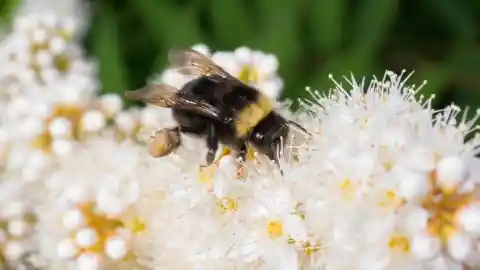
This list may make us feel a bit sad, but it’s important we memorize these names. Luckily, many programs have been implemented to change the current situation but you can do something as well. So, if you are lucky enough to see one of these animals, let it be known to any ecosystem association! We must stay strong and stick together for our environment!